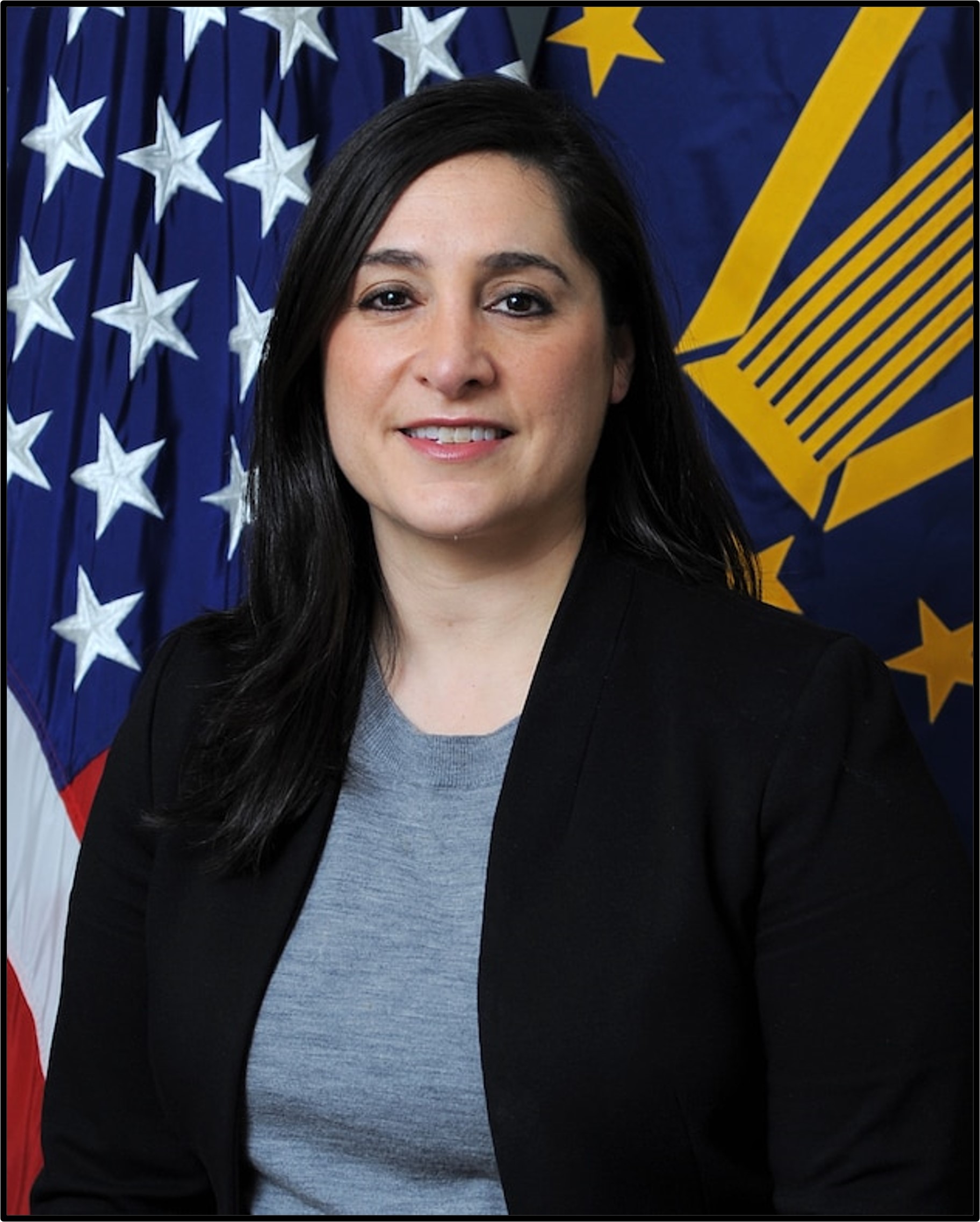In 2023, U.S. officials expressed increasing concern about Iran’s drone capabilities as a threat to global security as well as allies in the Middle East. Pentagon, State Department, White House, and intelligence officials cited Iran’s export of unmanned aerial vehicles (UAVs) to Russia, which began in August 2022.

Tehran had the largest arsenal of drones in the Middle East, the U.S. Defense Intelligence Agency (DIA) reported in 2022. Iran’s drones are inexpensive and versatile and allow for plausible deniability, Lt. Gen. Scott Berrier, the DIA director, told the Senate Armed Services Committee in May. The Islamic Republic has at least nine different types of suicide drones, which explode on impact. “Iran also proliferates UAV equipment and training to proxy and partner networks, which provides Tehran a deniable means of attacking U.S. and partner interests throughout the Middle East,” Berrier said.
Iran’s provision of drones to at least five governments—Russia, Venezuela, Sudan, Ethiopia, and Tajikistan—as well as seven proxy militias demonstrated a growing proliferation threat, U.S. officials charged. Tehran had exported hundreds of Shahed suicide drones and Mohajer strike and reconnaissance drones to Moscow by March 2023. “Russia has been using drones from Iran to kill Ukrainians citizens,” Secretary of Defense Lloyd Austin said in January. “In the process, Iran is gaining important battlefield experience and forging a strategic relationship with Russia. That’s deeply, deeply troubling. It’s a problem for American security, for Israeli security, and for global security.” The following are comments from U.S. officials since 2022 regarding Iran’s drone capabilities.
U.S. 2022 National Security Strategy
Oct. 12, 2022: “Iran interferes in the internal affairs of neighbors, proliferates missiles and drones through proxies, is plotting to harm Americans, including former officials, and is advancing a nuclear program beyond any credible civilian need.”
Secretary of State Blinken

In remarks with Israeli Prime Minister Benjamin Netanyahu on Jan. 30, 2023: “We agree that Iran must never be allowed to acquire a nuclear weapon, and we discussed deepening cooperation to confront and counter Iran’s destabilizing activities in the region and beyond. Just as Iran has long supported terrorists that attack Israelis and others, the regime is now providing drones that Russia is using to kill innocent Ukrainian civilians.”
Gen. Kurilla, head of Central Command
In an interview with Bahrain’s The Daily Tribune published on Feb. 14, 2023: “Tehran is now shipping deadly UAVs and advanced weaponry to Russia, supplying and supporting Russia’s illegal war in Ukraine.”

“Iran is the primary destabilizing element in the region, and I have been consistent on that point.”
“Iran was the primary concern for CENTCOM at its formation in 1983, and that remains the case today.”
“Iran has sharply evolved its military capability over time, and Iran today is far more capable, technologically advanced, and militarily powerful than just five years ago. To combat this, we are strengthening partnerships.”
“Israel and our other partners throughout the region see shared threats, and new partnerships are forming, which only benefits regional security and stability.”
“Across CENTCOM, we cultivate, strengthen, and lean on partnerships. We are focused on developing deep, abiding partnerships that will allow us to address a range of threats.”
In written testimony to the Senate Armed Services Committee on Feb. 8, 2022: “Iran remains the primary and enduring threat in the USCENTCOM area of operations due to its use of its increasingly sophisticated military capabilities, broad proxy network, and periodic willingness to use force against the U.S., our allies, and partner forces. Iran’s rapidly expanding military capabilities enable it to coerce its neighbors, threaten international trade, and exploit instability throughout the region. Tehran’s primary power projection tools are ballistic missiles, UAVs, and expanding maritime capabilities.”
Secretary of Defense Austin
At the AIPAC Political Leadership Forum on Jan. 10, 2023: “[Iran is] stoking instability across the region—including its support for terrorists and militias, its proliferation of drones, its menacing cyber activities, its maritime aggression, and its continued threats against foreign officials.”

“So Iran’s reckless actions don’t just threaten Israel. They endanger the entire Middle East and beyond, including by supporting Russia’s cruel targeting of civilians in Ukraine.”
“During this cruel winter, Russia has been using drones from Iran to kill Ukrainian citizens. In the process, Iran is gaining important battlefield experience and forging a strategic relationship with Russia.”
“That’s deeply, deeply troubling. It’s a problem for American security, for Israeli security, and for global security. And it just underscores the importance of standing up for what’s right.”
Deputy Assistant Secretary of Defense Stroul
At a briefing on Feb. 28, 2023: “We see Iran and Iran-backed threats to the region only increasing. We see them on ground by Iran’s sponsorship, arming, training, funding, and direction of militia groups, proxies, and non-state actors on the ground. We see it in the air threats from Iran’s proliferation of missiles and one-way attack drones to non-state actors across the region.”

“Even though the United States has consistently within the Department of Defense worked with our allies and partners to push back on Iranian destabilizing activities – and in fact, Secretary Austin made it a priority back in 2021 to focus on the Iran-backed one-way attack drone threat that we [were] really concerned and remain concerned about the threats to our partners in the Middle East. We are now at a point where Iranian threats are no longer specific to the Middle East, but a global challenge. And that is a result of the increasing military cooperation between Iran and Russia, and the illicit transfer by Iran to Russia of one-way attack drones that are being used in Ukraine to kill Ukrainian civilians.”
“So now we are shifting not only to what has been longstanding efforts to create a regional security architecture, push back and counter these activities in the region; we now need to rally a coalition not only in the Middle East, but a global coalition to push back on the malign cooperation between Iran and Russia.”
“It is reasonable to expect that the tactics, techniques, and procedures that the Iranians are learning and perfecting in Ukraine will one day come back to threaten our partners in the Middle East, which is why we are increasing cooperation now, intelligence-sharing, understanding these networks, and increasing our collective defensive capabilities so that we are prepared to counter these threats in the region.”
During a roundtable discussion with CENTCOM on Jan. 12, 2023: “So, we see this threat in—from Iran not only as consistent but increasing—first of all, continuing support, arming, training, equipping, and funding terrorists and proxy groups across the region. Number two, continuing aggression at sea. Three, obviously consistent threats from Iranian cyber-attacks. And four, of course, and most pressing in the news right now is Iranian proliferation of UAVs, not only to proxies and militias in the region but to Russia for use against Ukrainian civilians.
“So I would make the broader observation that all of us who have focused on stability and security in the Middle East know very well the threat from Iranian UAVs and has been working both to ensure force protection for U.S. forces who are in harm's way and are back in Syria but also to step up in supporting the defense of our partners, whether it is the attacks from the Houthis against UAE only one year ago, last January, the hundreds of attacks from Houthi UAVs against our partner, Saudi Arabia, not to mention countless others in the region.
“Now I think the key takeaway is what has—we've seen in the Middle East is not staying in the Middle East. The Iran-Russia increasing alliance, the proliferation of UAVs to Russia, and the possibility that there's contemplation of the transfer of ballistic missiles to Russia for use in Ukraine is both a call for the entire global community to step up, in how we counter the Iran threat, and very specifically to take a firm stance against Russian-Iranian cooperation.”
CIA Director Burns

In remarks at Georgetown on Feb. 2, 2023: “Especially concerning is the deepening of Iranian-Russian military connection as well. Last time I was in Kyiv a couple of weeks ago, of the 30 hours or so I was in Ukraine, I spent six of them in bomb shelters because of two separate strikes by the Russians against Ukrainian civilian facilities, many of them by Shahed-136 Iranian UAVs that had been supplied to the Russians, which they’ve been using to kill innocent Ukrainian civilians. So that’s obviously very troubling as well.”
In an interview with PBS NewsHour on Dec. 16, 2022: “And what's beginning to emerge is at least the beginnings of a full-fledged defense partnership between Russia and Iran, with the Iranians supplying drones to the Russians, which are killing Ukrainian civilians as we speak today, and the Russians beginning to look at ways in which, technologically or technically, they can support the Iranians, which poses real threats to Iran's own neighborhood, to many of our friends and partners in Iran's neighborhood as well.”
Lt. Gen. Berrier, DIA Director
In testimony to the Senate Armed Services Committee on May 10, 2022: “Iran’s conventional military strategy is based on deterrence and retaliation. If deterrence fails, Iran probably would seek to demonstrate strength by striking its adversaries. Iran fields the region’s largest arsenal of UAVs and missiles and has increasingly relied on UAVS, likely because they are inexpensive, versatile, and Iran probably believes they sometimes allow for plausible deniability. Iran has emphasized improving UAV accuracy, lethality, and over-the-horizon capabilities. Iran also proliferates UAV equipment and training to proxy and partner networks, which provides Tehran a deniable means of attacking U.S. and partner interests throughout the Middle East.”

“In 2021, Iran conducted arms sales negotiations with Russia, China, and North Korea. These negotiations probably reflect Iran’s military modernization priorities—missile, naval, UAV, and air defense forces— but Tehran also may pursue more robust air power and EW capabilities based on lessons learned from recent conflicts.”
“In 2021, Iran began using more aggressive measures and novel tactics—including targeting Israeli associated commercial shipping—as part of a new strategy to counter Israel. Tehran has increasingly relied on UAVs to fulfill this strategy and has conducted or enabled at least six UAV attacks against Israeli interests in the past year. Iran also seeks to prevent Israel from normalizing its relations with Arab states, combining threats from its proxies and partners with diplomatic outreach.”
“In Iraq, Iran seeks to ensure that Iranian-aligned Shia militia groups maintain military and political influence. Iran has improved militia capabilities and increased their operational independence. In 2021, Iraqi militias used Iranian-provided one-way UAVs to attack U.S. targets for the first time and have modulated subsequent attacks based on political circumstances. Iran has directed temporary pauses in militia attacks to manage escalation and improve the militias’ political prospects in response to Iraq’s October 2021 elections. Militias conducted multiple UAV and indirect fire attacks on U.S. forces in January to increase pressure on the United States to withdraw.”
“In Syria, Iran seeks to secure a lasting economic and military presence while deterring continued Israeli strikes on Iranian interests. During the past year, Tehran has demonstrated its willingness to target U.S. forces in Syria. Since 2019, Iranian-backed forces have conducted several rocket attacks against U.S. and coalition partners in Syria. In October 2021, Iranian forces in Syria struck U.S. forces with multiple UAVs in the most sophisticated attack against a U.S. military base in the country to date, reportedly in retaliation for an Israeli airstrike that used airspace near the At Tanf area.
“In Yemen, Iran continues to support the Huthis with advisers and weapons to facilitate complex and long-range attacks against Saudi Arabia and United Arab Emirates (UAE) in order to pressure the Saudi led-coalition. In the past year, Iran supplied the Huthis with one of its most advanced one-way–attack UAVs, the Shahed-136, which provides Iran and the Huthis long-range strike capabilities. Following three UAV and missile attacks against the UAE in January, the Huthis have refocused their cross-border UAV and missile attacks on Saudi Arabia and maritime targets in the Red Sea.”
National Counterterrorism Center Director Abizaid

In testimony to the Senate Committee on Homeland Security and Governmental Affairs on Nov. 17, 2022: “Iran-backed militants in Iraq and Syria target U.S. forces with unmanned aircraft systems and indirect fire attacks as they try to compel their withdrawal from the region.”
Picture Credits: The Gaza Drone via Fars News Agency CC BY 4.0
